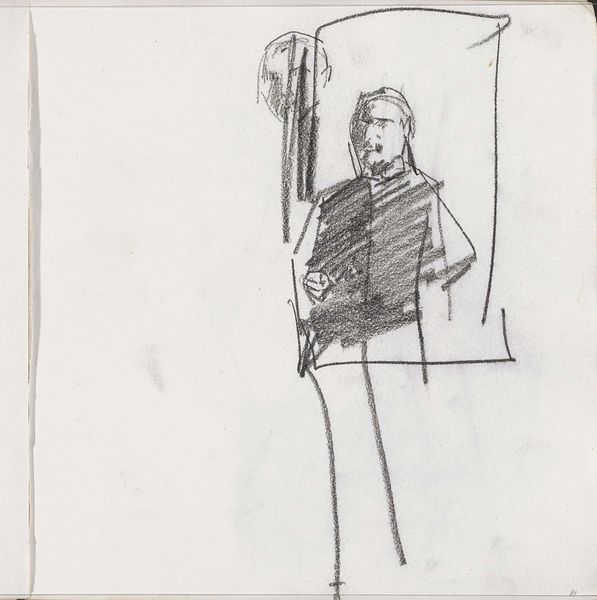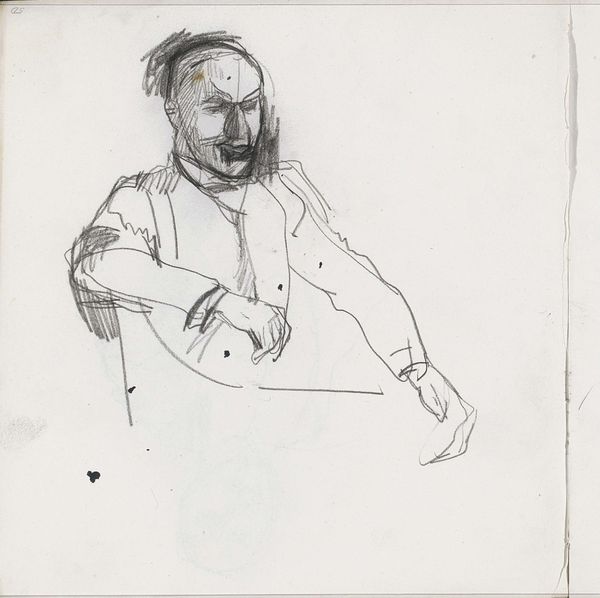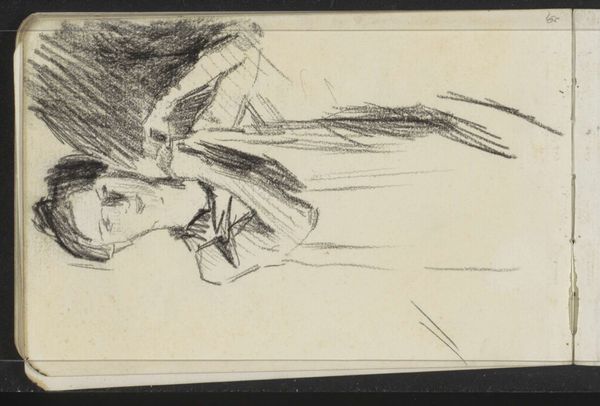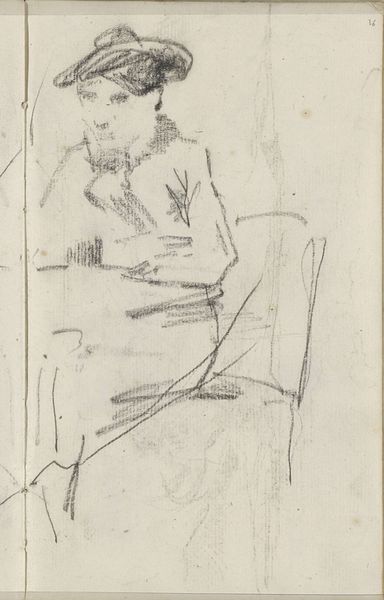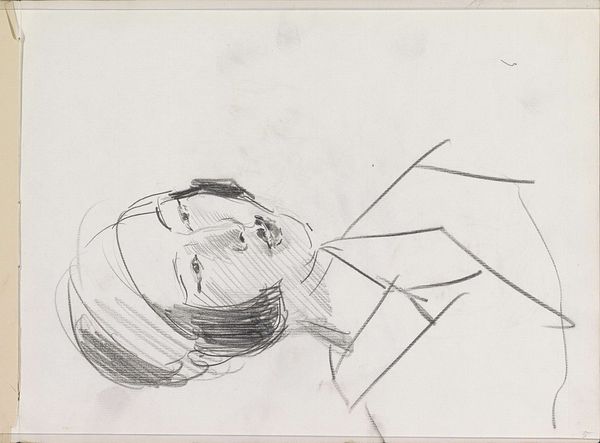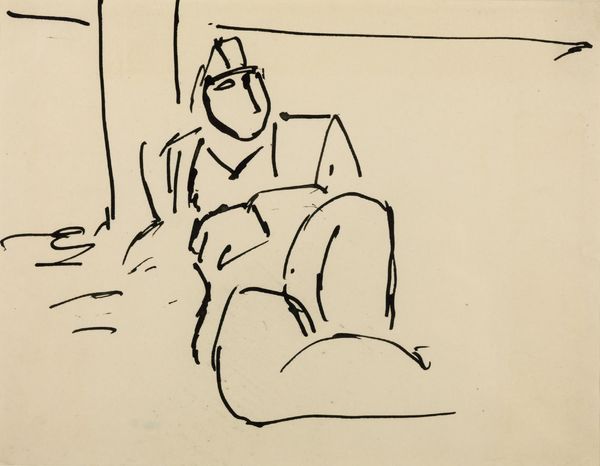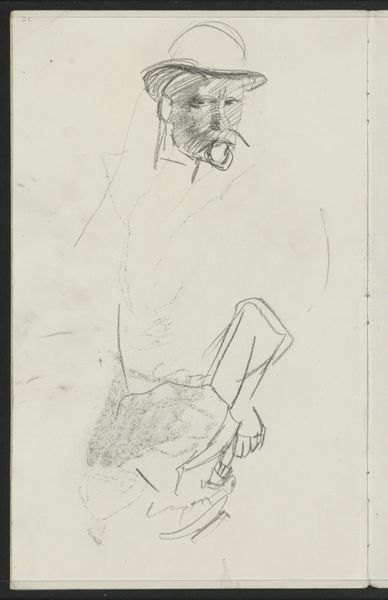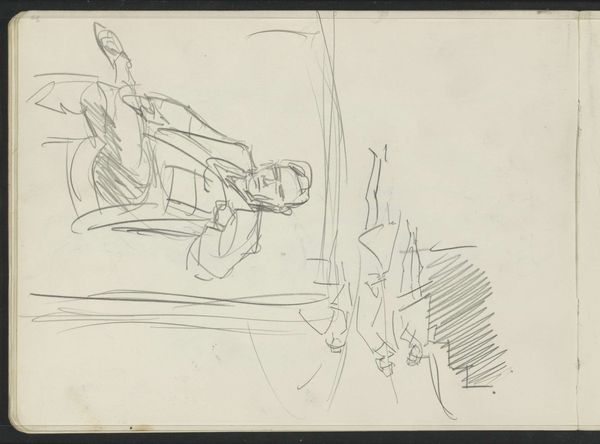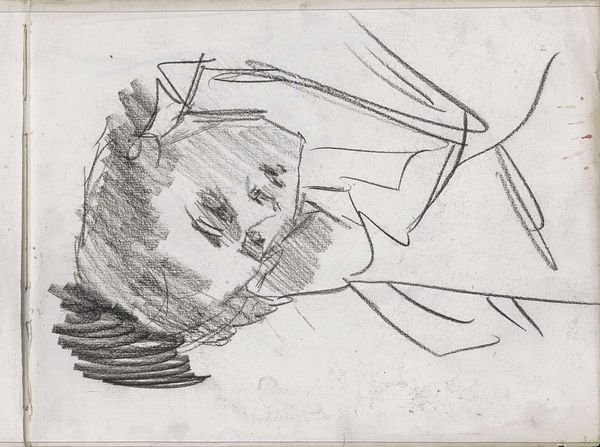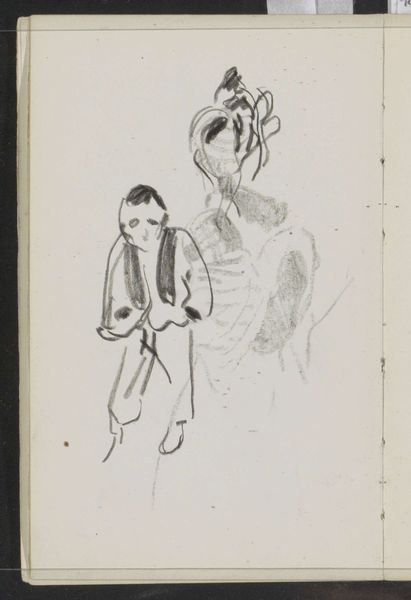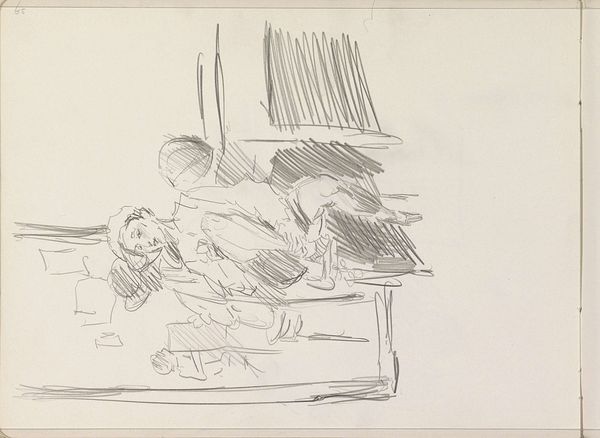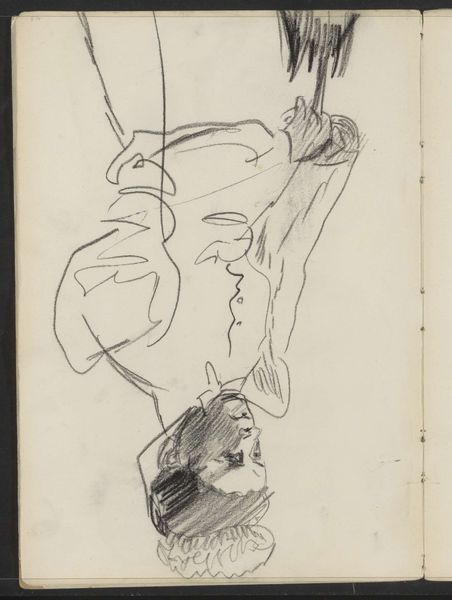
Copyright: Rijks Museum: Open Domain
Editor: So here we have "Man in een fauteuil," or "Man in an Armchair," a drawing by Isaac Israels, created sometime between 1875 and 1934, in pencil. It feels like a very immediate sketch, like a glimpse of someone caught in a moment. What's your take on this? Curator: It's fascinating to consider this in terms of production. Look at the sketchiness – the lines are economical, focusing on the essential forms. This wasn’t about illusionism; it was about quickly capturing information. It speaks to a shift in artistic labor, where the speed and efficiency of capturing the modern world became prioritized. Editor: That's interesting. So the *act* of sketching itself becomes part of the artwork’s meaning? Curator: Exactly! The visible process, the very materiality of pencil on paper, becomes significant. We see the artist's hand at work, the immediacy of their observation translated directly to the page. It’s also worth considering the social context: sketching was becoming increasingly common for artists, part of a larger culture of observation and documentation fuelled by industrialization and urban life. Do you notice how he is staged in a scene? Editor: I see it too. I think that he looks somewhat powerful and in charge of his setting because of his posture and the setting he is staged in. It makes me wonder where the origin of the work resides. Is the subject in this sketch someone the artist knows personally, or is this an attempt to idealize the male subject of his time? Curator: Precisely. Israels presents the process and raw materiality, moving away from highly polished, laboured artwork and highlighting quickness of hand and process, something we still grapple with today when we ask what it means to be making something that could be viewed as skillful versus amateur. It can make one really consider labor in terms of artistic meaning. Editor: I see it now! Thanks! That makes me look at it in a completely new way. It is less about "who" the subject is and "how" it got made. Curator: And perhaps about how it was meant to be *used*. Was it practice? Was it meant to be this final work, and what might Israels suggest with either scenario?
Comments
No comments
Be the first to comment and join the conversation on the ultimate creative platform.
